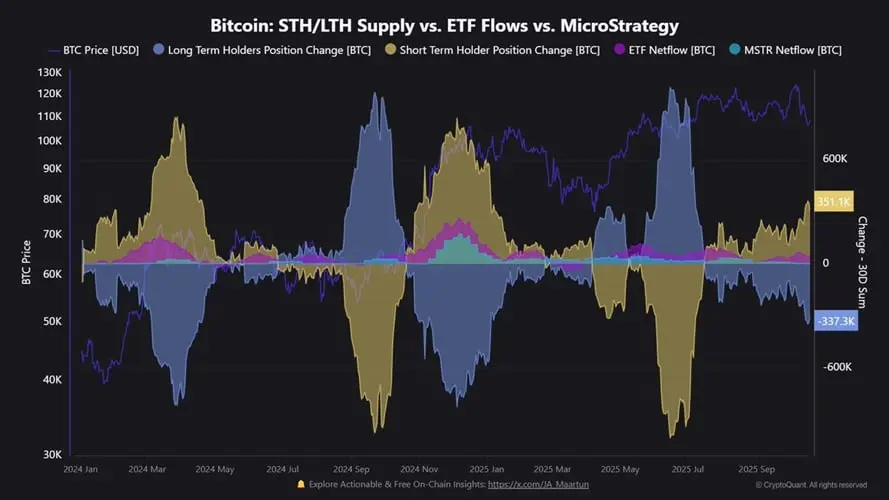SpaceX moved 2,485 BTC worth about $268 million to two new wallets after dormancy, signaling a tactical repositioning of its Bitcoin. It marks the year’s second major wallet activity, with current Coinbase Prime Custody holdings around 5,790 BTC and no outgoing sales reported to date.
-
Internal custodial repositioning signals enhanced security and diversified cold storage strategy.
-
July movement of 1,308 BTC valued around $153 million suggests ongoing custody adjustments rather than active trading.
-
Institutional flows show resilience amid volatility: US spot Bitcoin ETF net inflows overall, with ETFs representing a notable share of market liquidity.
SpaceX’s Bitcoin strategy in focus: follow the latest on-chain moves and custody updates from COINOTAG.
What is SpaceX’s current approach to Bitcoin holdings and custody?
SpaceX’s Bitcoin holdings appear to be undergoing a strategic repositioning, evidenced by the latest transfers totaling 2,485 BTC. The on-chain activity points to a shift in cold storage and custodial arrangements, with roughly 5,790 BTC held via Coinbase Prime Custody and no outbound sales reported at the time of observation.
What factors drive institutional Bitcoin activity and SpaceX’s movements?
On-chain analytics show a notable redistribution of Bitcoin among long-term and short-term holders. CryptoQuant data indicate long-term holders reduced their exposure by about 337,300 BTC, while short-term holders added roughly 351,100 BTC, signaling a broad reallocation of supply. Bitcoin traded around $107,753, down about 2.6% in 24 hours and roughly 3% over the week, with daily trading volume averaging around $61.33 billion, underscoring ongoing volatility. Despite price swings, institutional inflows from ETFs and corporate treasuries have remained a stabilizing factor for the market. SoSoValue data shows the US spot Bitcoin ETF recorded a net outflow of about $40.47 million in the last 24 hours but a cumulative net inflow of about $61.5 billion to date, with total net assets near $149.66 billion — roughly 6.7% of the token supply. This environment continues to drive corporate treasury strategies, including those of SpaceX, as firms balance liquidity, custody, and transparency.
 Bitcoin STH/LTH Supply vs. ETF Flows vs. Strategy. Source: CryptoQuant
Bitcoin STH/LTH Supply vs. ETF Flows vs. Strategy. Source: CryptoQuant Despite the downturn in spot prices, institutional inflows from exchange-traded products and corporate treasuries have provided a cushion against broader selling pressure. SoSoValue data indicates the US spot Bitcoin ETF holds a substantial portion of market activity, with a multi-decade trend toward greater corporate participation in Bitcoin as a treasury asset. The current positioning aligns with a wider industry pattern in which large holders rebalance to strengthen custody, diversify storage locations, and reassure counterparties about governance and compliance protocols. SpaceX’s on-chain movement appears consistent with this ecosystem-wide shift rather than a speculative trading signal.
SpaceX’s Bitcoin holdings narrative is inseparable from a broader discussion around corporate treasuries and the evolving custody landscape. The aerospace company has maintained a cautious stance since the initial disclosure of BTC holdings, with occasional repositioning to optimize security and streamline governance. The firm’s public record shows a history of adjustments rather than sustained selling, a pattern echoed by peers who view BTC as a reserve asset rather than a speculative play. The latest transfer activity, therefore, fits a measured approach to treasury management rather than an abrupt strategic pivot.
At this stage, there is no formal statement from SpaceX, but the on-chain data suggests that the company is refining its approach to Bitcoin custody, potentially consolidating or diversifying its cold storage and custodian counterparts. As with other large corporate holders, the focus appears to be on balancing liquidity needs, risk exposure, and regulatory compliance while preserving long-term exposure to Bitcoin as a strategic asset class.
Publication date: October 2025 • Last updated: October 2025
Author: COINOTAG
Frequently Asked Questions
Question 1: How does SpaceX manage Bitcoin holdings in custody?
SpaceX appears to maintain a diversified custody setup, with a sizable portion of BTC held in Coinbase Prime Custody and additional assets stored across other secure addresses. The recent transfers indicate periodic rebalancing of cold storage arrangements while preserving long-term exposure to Bitcoin as a treasury asset.
Question 2: Why is SpaceX repositioning its Bitcoin custody now?
The repositioning aligns with a broader industry pattern: institutions seek enhanced security, clearer governance, and improved transparency. On-chain data shows a shift from inactivity toward targeted, strategic movements, suggesting evaluation of custodial solutions and potential strengthening of internal controls rather than a move to liquidate holdings.
Key Takeaways
- Takeaway 1: SpaceX executed a multi-wallet transfer totaling 2,485 BTC after dormancy, signaling strategic custody repositioning rather than an exit from BTC exposure.
- Takeaway 2: Total BTC holdings via Coinbase Prime Custody have declined to around 5,790 BTC, indicating internal reallocation or custody optimization without visible sales.
- Takeaway 3: Institutional dynamics remain robust as ETF flows and corporate treasuries contribute to liquidity and price resilience, highlighting ongoing interest in corporate BTC strategy.
Conclusion
SpaceX’s latest on-chain activity underscores a measured approach to Bitcoin custody within a broader corporate treasury trend. The combination of new wallet movements, stable ETF and institutional flows, and ongoing governance considerations suggests the firm is pursuing security, transparency, and resilience in its BTC strategy. As on-chain data continues to evolve, observers should monitor custody changes and ETF activity for clues about SpaceX’s longer-term stance on Bitcoin and its role in its treasury portfolio.
